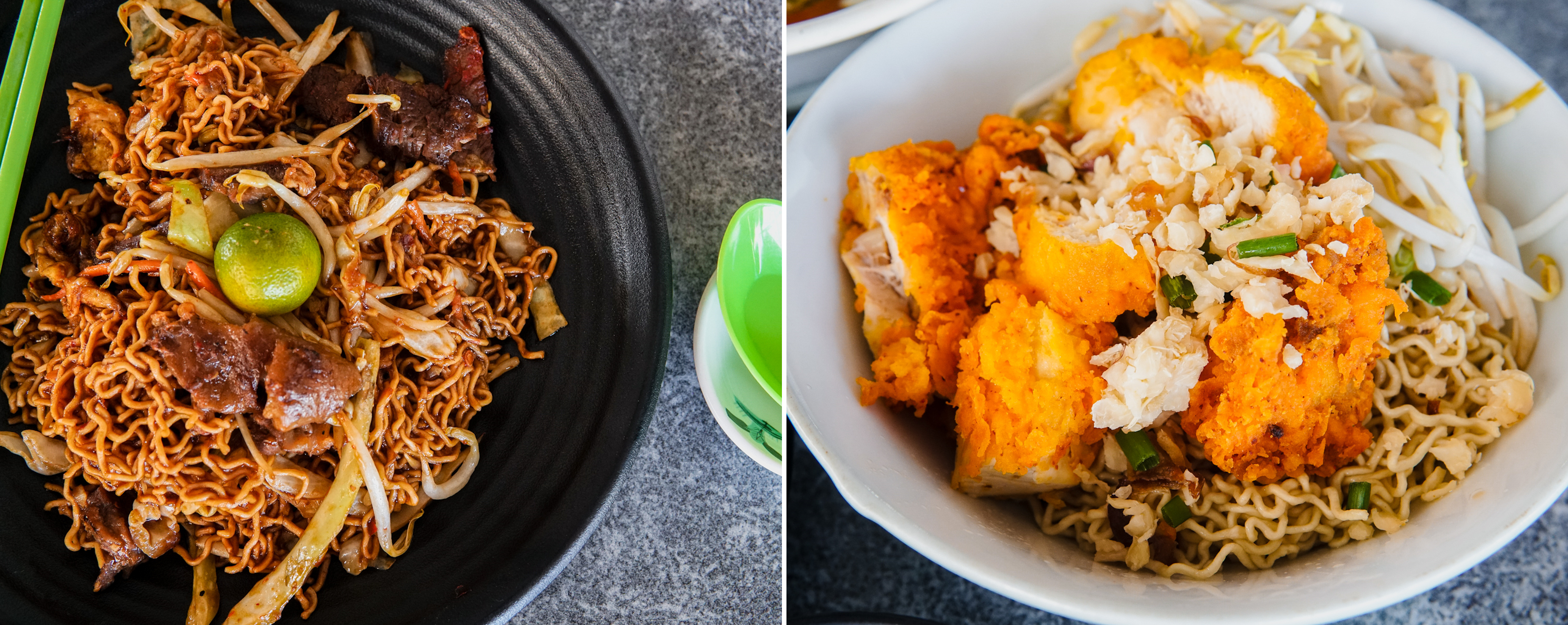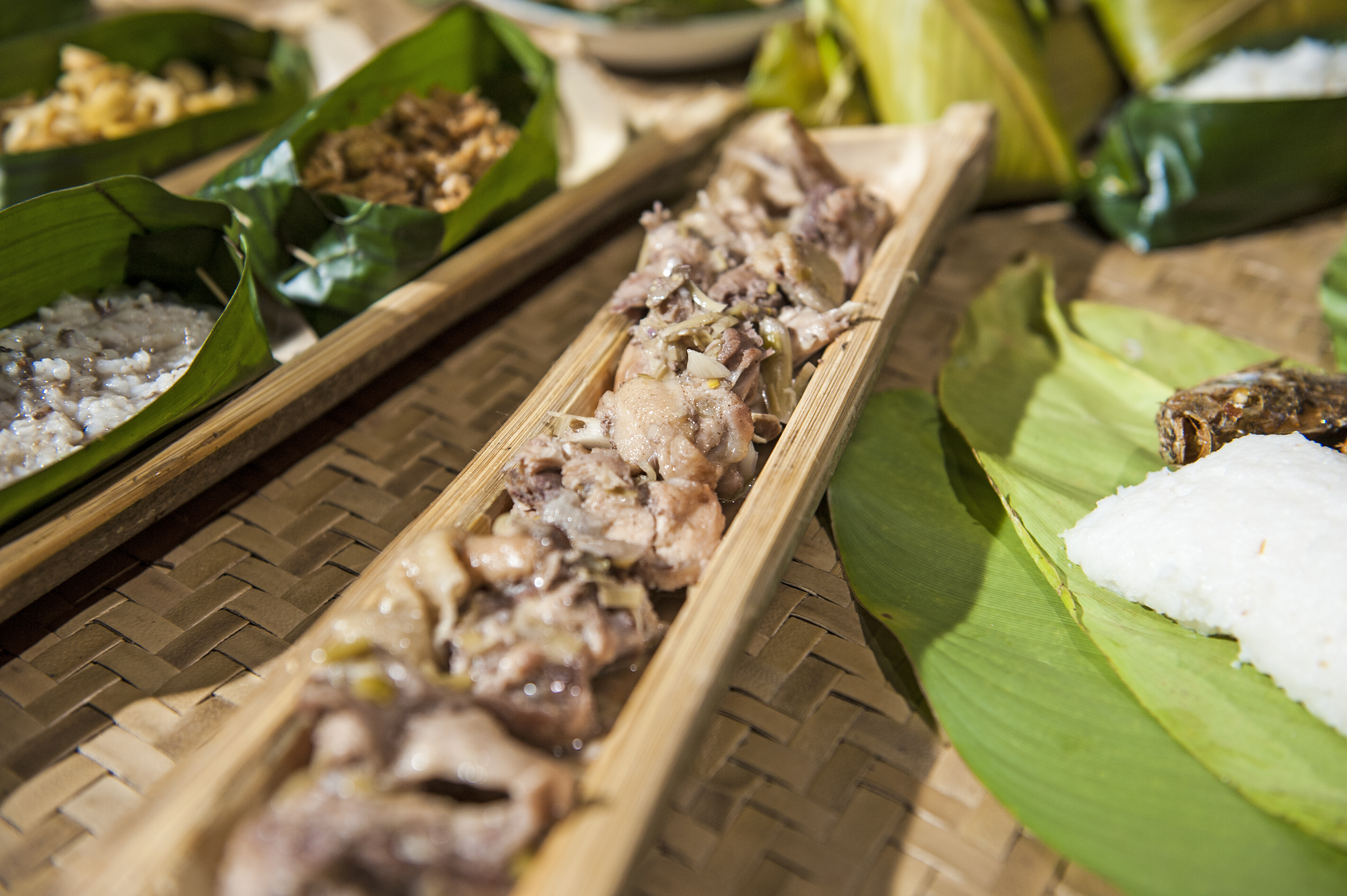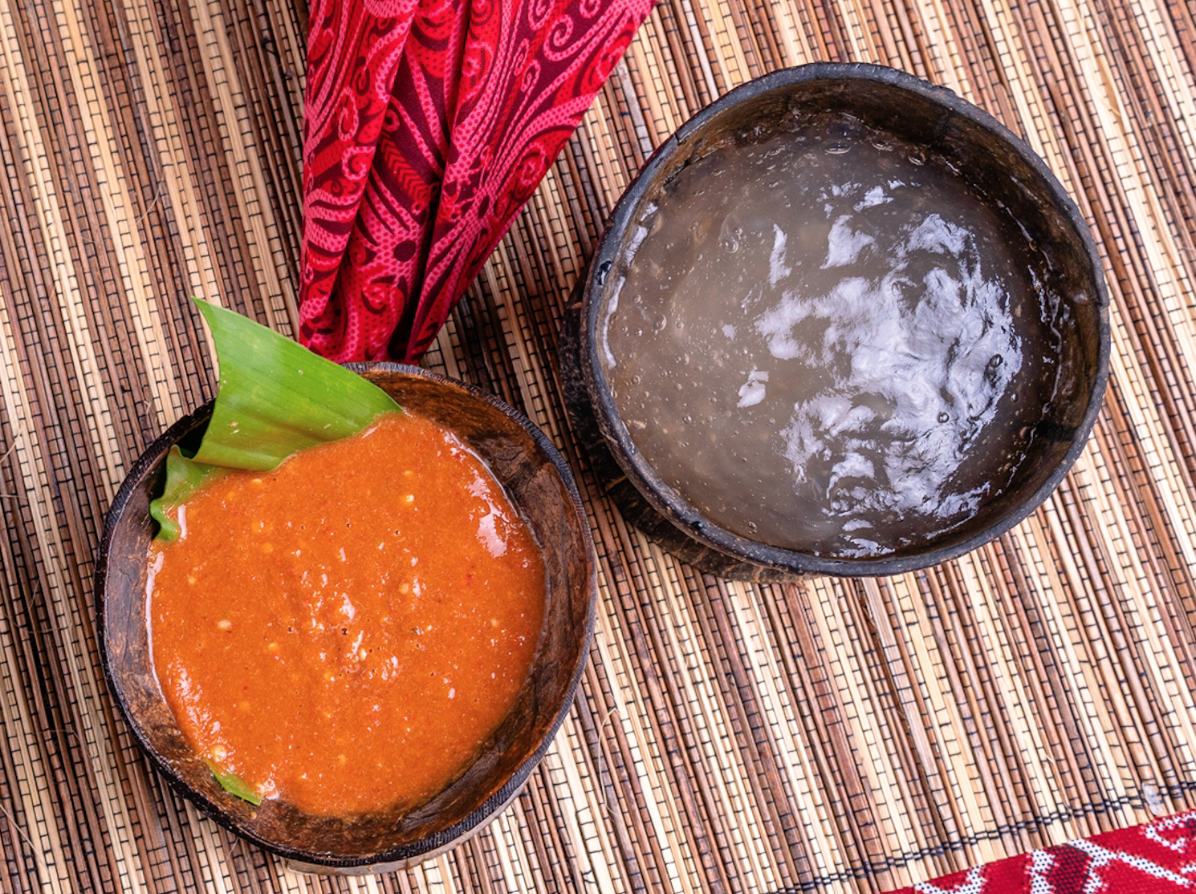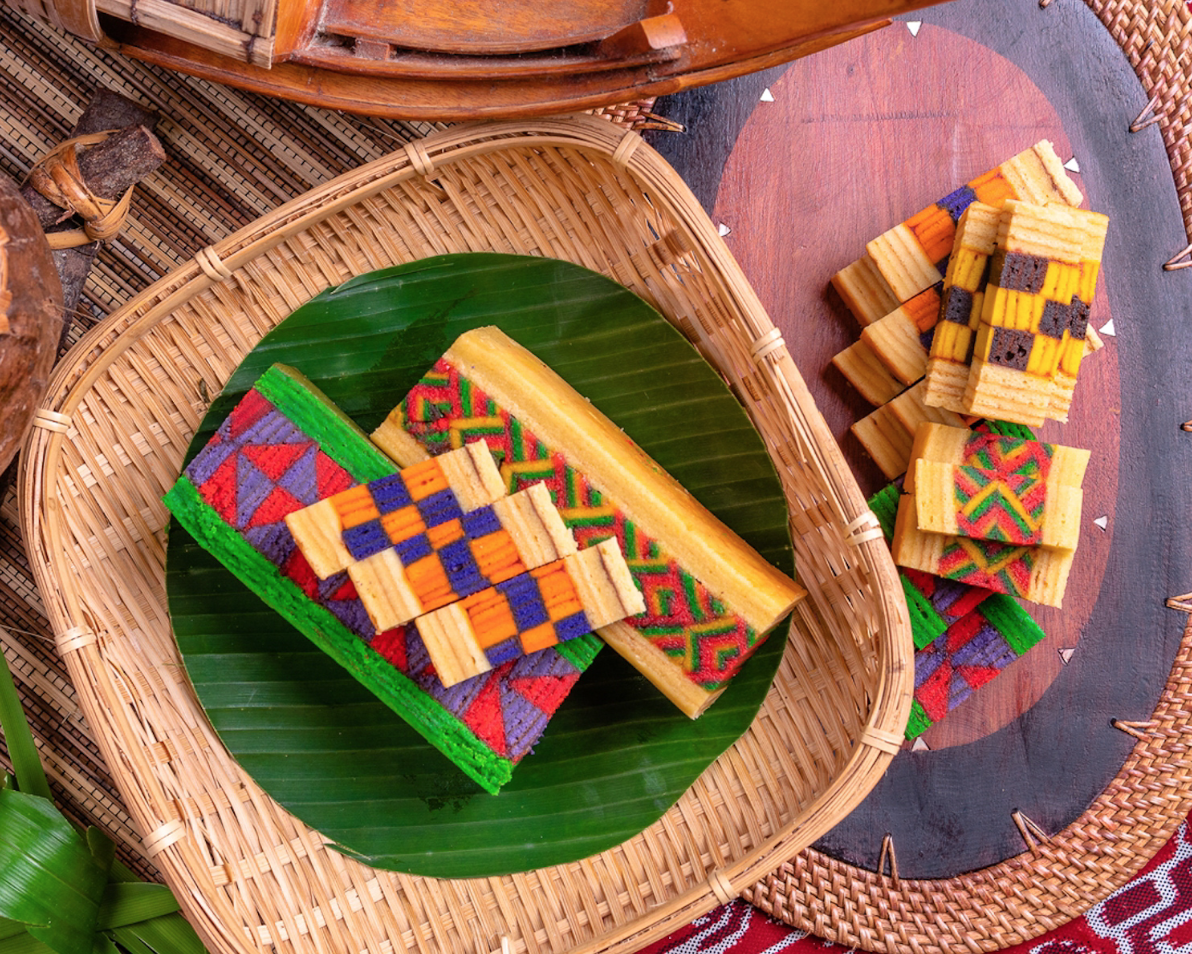
Embark on a culinary journey across Sarawak, a verdant treasure tucked away on the island of Borneo, where its gastronomic scene is as diverse and compelling as its lush rainforests. This guide is curated to help you explore the rich tapestry of Sarawakian cuisine; a symphony of tastes that tell stories through its unique dishes, which reflect the region's cultural confluence.
Sarawak's culinary expertise is more than just a focus on taste; it is an epicurean experience rooted in centuries of tradition and creativity. The juxtaposition of Indigenous recipes with influences from Malay, Chinese and Indigenous Dayak cultures results in unique flavour profiles that are both fascinating and educational. Walk through the bustling markets, traditional diners or avant-garde restaurants and discover a gourmet paradise where each meal unravels yet another chapter in Sarawak's rich history.
Join us in discovering Sarawak's culinary miracles, where each tempting bite provides an insight into the heart and soul of this amazing Malaysian state.

Kolo Mee is a traditional Sarawakian dish prepared using dry, springy egg noodles mixed with a savoury combination of sliced BBQ pork or chicken, minced pork, shallots and fried onions, in addition to a dash of MSG and fish sauce for seasoning. The name of this dish is derived from the Cantonese phrase ‘gon lo’ literally translating as ‘dry mix’, featuring a lighter version without the use of lard, served with just enough sauce to coat the noodles. Halal versions are available where pork is replaced with chicken. Freshly cooked wontons, fish balls and veggies are all optional, but delicious accompaniments. Kolo Mee is typically served with soup and soy sauce on the side. Recommended spots to enjoy this delicacy include Laila Inn Cafe, Sainah Cafe (Halal) and Bujang Lelang Cafe.
Sarawak Laksa is a dish known for its rich, spicy and aromatic broth. This distinctive Malaysian cuisine features a complex blend of ingredients including turmeric, lemongrass, galangal and chillies, which is often combined with shrimp paste and coconut milk.
Traditionally laksa is served with thin plus chewy rice vermicelli noodles. It is commonly garnished with shredded chicken, prawns and tofu puffs. In addition, it is topped with a handful of fresh bean sprouts, shredded omelette, coriander and a squeeze of lime, which infuses the dish with a zesty freshness. Typically accompanied by sambal (chilli paste) along with pickled vegetables for added heat and flavour, Sarawak Laksa stands out from similar varieties like Penang Laksa or Laksa Lemak due to its unique blend of a spicy and creamy broth. Notable places to enjoy Sarawak Laksa include Aunty Goh’s Laksa Restaurant, 126 Laksa, Laksa Dewi Cafe and Mom’s Laksa Cafe in Kuching.

Ayam Pansuh, also known locally as Manok Pansoh is a typical Sarawakian dish known for its unique cooking process yet rich flavour. This cuisine, which originated from the Indigenous Dayak culture, consists of chicken marinated with native spices and herbs such as ginger, lemongrass and garlic and occasionally also mushrooms or onions. The marinated chicken is placed inside a bamboo tube (pansuh), which is then sealed and cooked over an open fire or in an oven, resulting in a fragrant, smoky taste. The end product is a delicious, savoury meal with rich flavours. Ayam Pansuh, often enjoyed with steamed rice, is also a popular dish for social events or special occasions. Recommended spots to enjoy this delicacy include Lepau Restaurant, The Lamin and Schatz Kitchen Miri.

Sago Linut is a traditional cuisine that is especially popular among the Indigenous Dayak communities. This staple dish is an important part of Dayak cuisine and is frequently served at traditional events and community feasts. The dish is made from sago, a type of starch produced from the sago palm. Sago is mixed with water to produce a thick, sticky paste, which is then steamed to get its gelatinous and chewy texture. Sago Linut is usually bland making it a great carrier for savoury side dishes such as meat stews, spicy sambal or rich gravies prepared using meat or seafood. Notable places to sample Sago Linut include My Village Barok Bistro Restaurant, Tunok Seafood and Roti Mok by Mira Cake House in Kuching.
Nasi Aruk is a beloved Sarawakian dish among the Indigenous Iban, Bidayuh and Orang Ulu groups. Distinct from traditional fried rice, it has a unique cooking process that eschews oil and fats, instead, it is stir-fried until the rice gets thoroughly toasted, giving it a smoky, charred aroma. This unique technique is reflected in its name ‘Aruk’ which means ‘charred’ in the native Sarawakian Malay dialect. The meal is made out of rice, anchovies, wild ginger blossom (torch ginger), turmeric leaves and bird's eye chilli for spice. It is frequently served with sides of grilled fish, fresh vegetables such as ulam and cucumbers alongside spicy sambal.
Nasi Aruk embodies a communal living concept and sustainable lifestyle of the region. It is traditionally prepared in large quantities to be shared amongst many, symbolising strong communal bonds of traditional resourcefulness. This dish offers a rich, cultural experience, showcasing the diverse culinary heritage of Sarawak. Top places to enjoy Nasi Aruk include Wayna Cafe, Lepau Restaurant and Rumah Hijau Cafe in Kuching.
Nasi Goreng Dabai is a unique version of fried rice, named after its primary ingredient, dabai; a black olive-like fruit that is common to the region. This recipe celebrates Sarawak's rich culinary tradition by integrating dabai, which is usually steeped in water to soften before it is blended or combined with fried rice. The resulting taste is a lovely combination of rich, acidic profiles with somewhat sweet overtones, which are frequently accompanied by stir-fried veggies and a variety of proteins such as chicken, prawns or eggs as well. Nasi Goreng Dabai is distinguished by its gentle spicy flavour balanced with savoury and tangy notes. It is often served with fried shallots, sambal (chilli paste) and fresh veggies or pickles. Recommended places to try this unique dish are Mom's Laksa Cafe and Kak Bedah Cafe in Kuching.
Umai is a Sarawakian raw fish salad that is particularly popular among the Dayak and Melanau communities. This meal shows traditional food preparation and preservation methods using local resources. Umai is often made using raw fish, such as tenggiri (mackerel); thinly sliced or cubed and marinated in lime juice, which naturally ‘cooks’ the fish due to its acidity.
The meal is prepared using chopped herbs and vegetables like sliced onions, chillies and tomatoes. It is seasoned with salt, sugar, soy or fish sauce. The end result is a fresh, acidic taste with a hint of fire from the chillies and a savoury depth from the fish alongside other ingredients. Served chilled or at room temperature, Umai is often enjoyed with rice or as part of a larger meal, highlighting Sarawak’s vibrant culinary style. Top places to try Umai include The Lamin, Dapur Melanau and Abu Umai Segar in Kuching and Mukah.

Kek Lapis Sarawak is a vivid, multi-layered cake that first appeared in Sarawak in the 1980s. It is known for its rich, aromatic taste yet unique multicoloured layers. This cake, which is especially popular during festive events like Eid Mubarak, Chinese New Year and weddings, exemplifies Sarawak's rich culinary tradition. It is carefully made using layers, generally ranging from 10 to over 20 thin layers, created from a batter of butter, eggs, sugar and flour, with additional flavouring such as vanilla, chocolate or spices, as well as food colouring for added visual appeal. The cake is made by painstakingly baking each layer separately, which is a tedious procedure that demands talent, patience and time to ensure the consistency of the layers. The end product is a rich, buttery cake with a soft texture and a variety of tastes depending on the additional components. Top places to sample this delightful treat include Kek Lapis Mama Su, Kek Lapis Warisan and Kuih Lapis Sarawak at Mira Cake House in Kuching.
Mee Jawa Rabak is a typical Sarawakian noodle dish known for its thick, rich sauce and soothing flavours. This dish, which is frequently consumed at family gatherings or special events, displays the numerous culinary influences found in Sarawakian cuisine. The primary ingredients are egg noodles or yellow noodles, which are cooked in a thick gravy prepared using spices, tamarind and occasionally soy sauce as well, resulting in a rich, somewhat sweet sauce. Protein options include beef, chicken or prawns, as well as veggies such as bean sprouts and potatoes. The noodles are stir-fried or cooked in the sauce until well coated, allowing the flavours to combine. The finished meal is meaty, with a strong spice blend alongside a pleasant taste profile. Mee Jawa Rabak is typically served hot which is often garnished with fresh herbs or additional condiments. Top places to try this dish include Fauziah Family Cafe, Makan Kaw Kaw Restaurant and Mee Jawa & Sate Rabak in Kuching and Bintulu.
Paku and Midin are traditional vegetables integral to Malaysian and Sarawakian cuisine, both celebrated for their unique flavours.
Paku, also known as ‘Paku Pakis’ or Fern, refers to the young, tender fronds of edible ferns. Characterised by a slightly crunchy texture, Paku is commonly sauteed with garlic, chilli and other seasonings. It also can be used in soups, stir-fries or salads. Nutrition-wise, it is rich in minerals, including iron and vitamin C.
Midin, or the Midin Fern, is a wild fern native to Sarawak, renowned for its tender, curly fronds and slightly tangy, nutty flavour. Midin is a staple in Sarawakian cuisine, often stir-fried with garlic, chilli, shrimp paste or soy sauce. It is also used in soups or stews. Like Paku, Midin is also a good source of vitamins and minerals.
Top places to enjoy these ferns include Rock Road Seafood Restaurant, Topspot Food Court and Sin Soon Lee Seafood in Kuching.
Oyster Pancake is another beloved local cuisine favoured for its pleasing taste. A famous street cuisine also considered a comfort dish, it displays Sarawak's love of fish and Indigenous ingredients. Fresh, small oysters are blended with a batter composed of flour, water and occasionally egg to produce a light, crunchy texture after it is cooked. The batter is seasoned with salt, pepper and, on occasion, soy sauce as well. Frequently enhanced with chopped spring onions or other local greens before being placed in a hot, oiled skillet, it is then cooked until crispy on the exterior but slightly chewy on the inside. The result is a delicious savoury pancake with interesting contrasts between its crispy surface and its fluffy centre. Oyster Pancake is typically served with a dipping sauce or chilli sauce, making it a versatile snack or choice of appetiser. Top places to enjoy this delectable dish include Topspot Food Court and Restoran ADM in Kuching.
Bamboo Clam, also known as ‘Lui Cha’ or ‘Sipit’ is a traditional seafood dish renowned for its delicate flavour, embodying the region's rich seafood tradition. Unsurprisingly, it is also a popular option in both local restaurants and home kitchens, particularly in coastal or riverine towns.
These clams are named after their long, thin cylindrical shapes, which resemble the bamboo, with its smooth, slightly curved shell. Preparation involves thoroughly cleaning the clams to remove any sand or dirt.
They are usually grilled or steamed with basic ingredients like garlic, ginger and soy sauce, but they can also be stir-fried or used in soups or stews. Bamboo clams are frequently served as a main dish or appetiser but sometimes come with a dipping sauce or as a part of a broader seafood feast. Bamboo clams have a mild, somewhat sweet taste, which is enhanced through the cooking process and seasoning used. Bamboo clams are high in protein, minerals and essential vitamins, making them a nutritious complement to any meal. Top places to enjoy Bamboo Clam in Sarawak include Topspot Food Court, Tunok Seafood at Eden Food Court and Sin Soon Lee Seafood, which can all be found in Kuching.